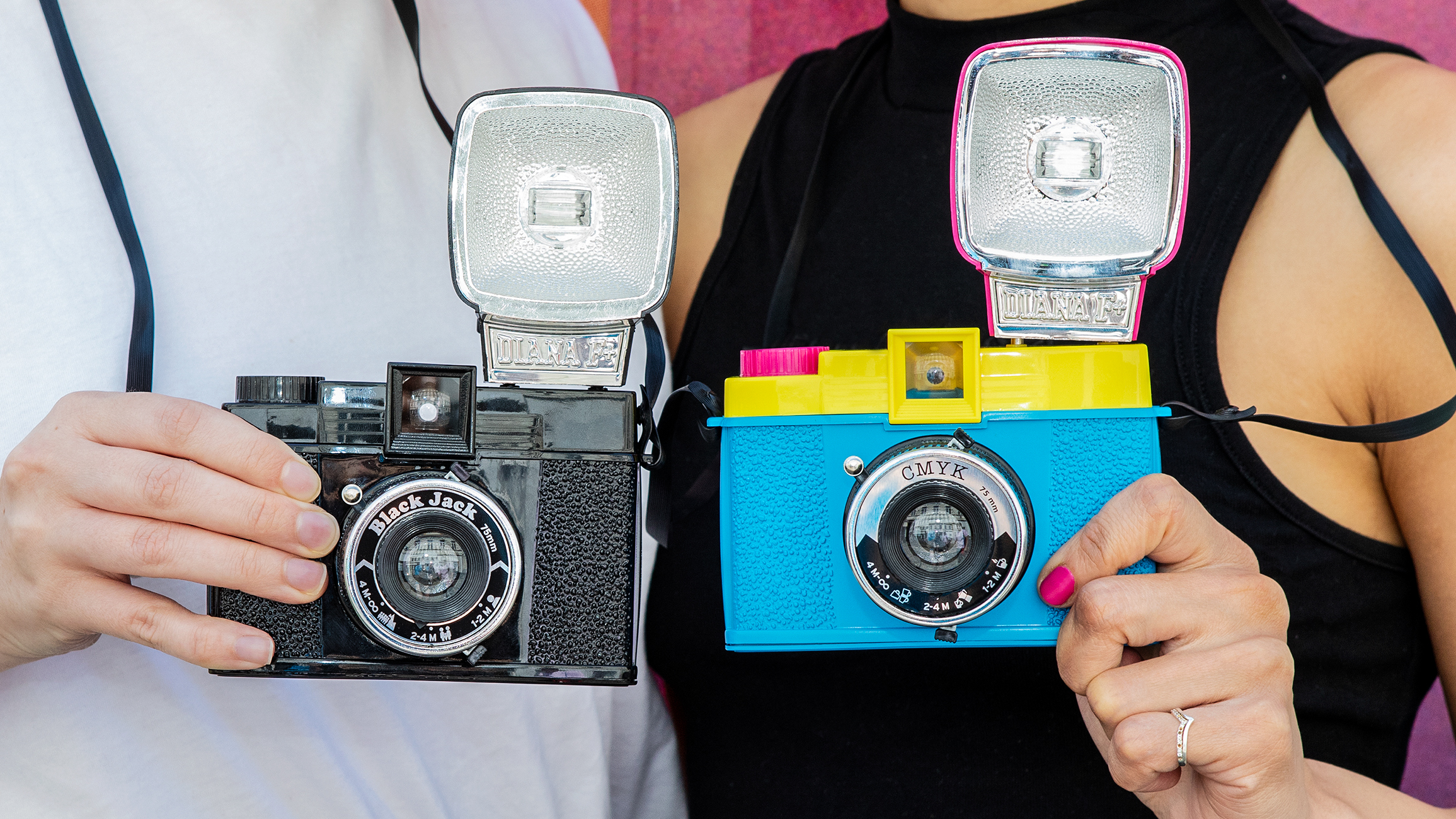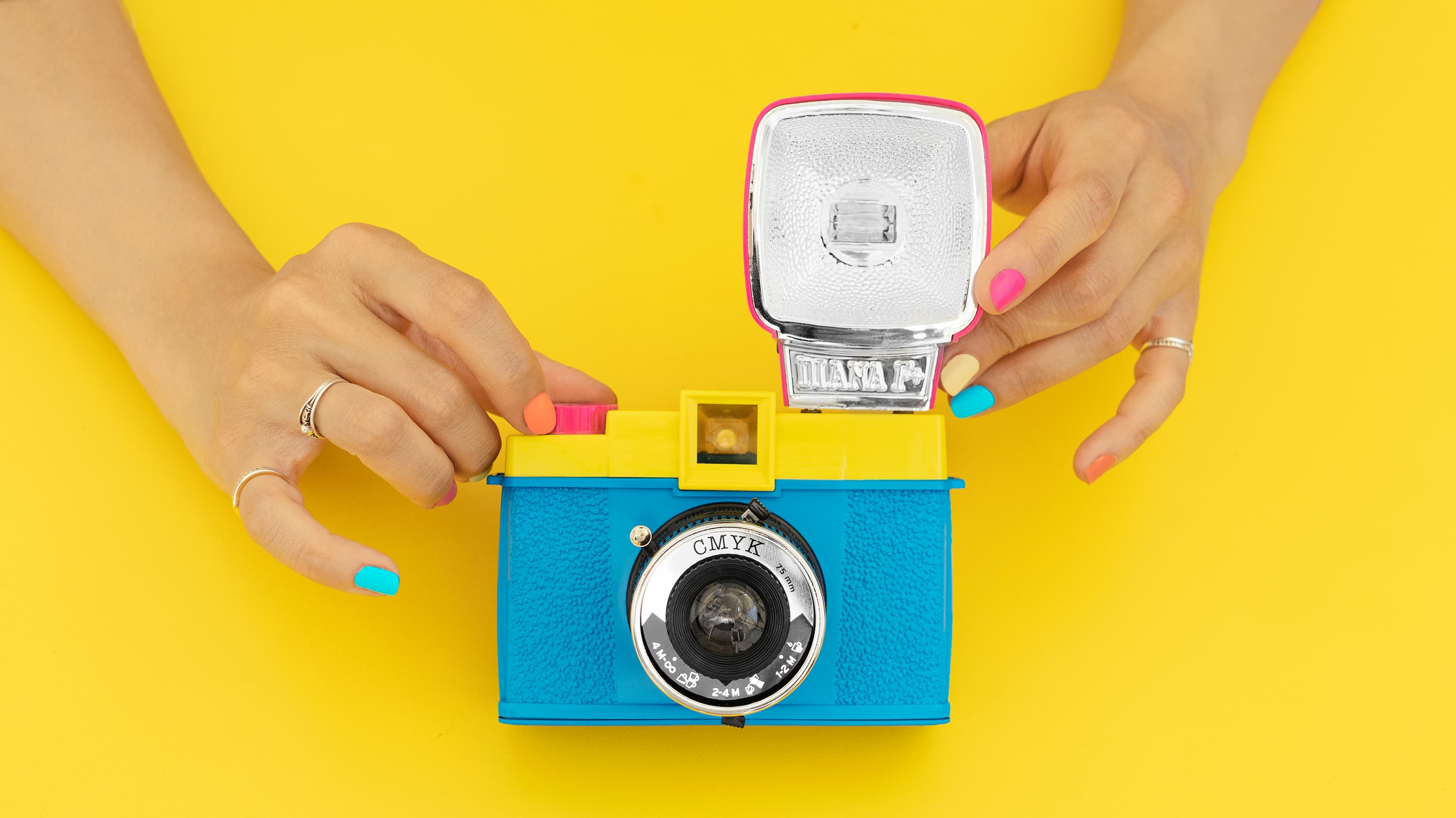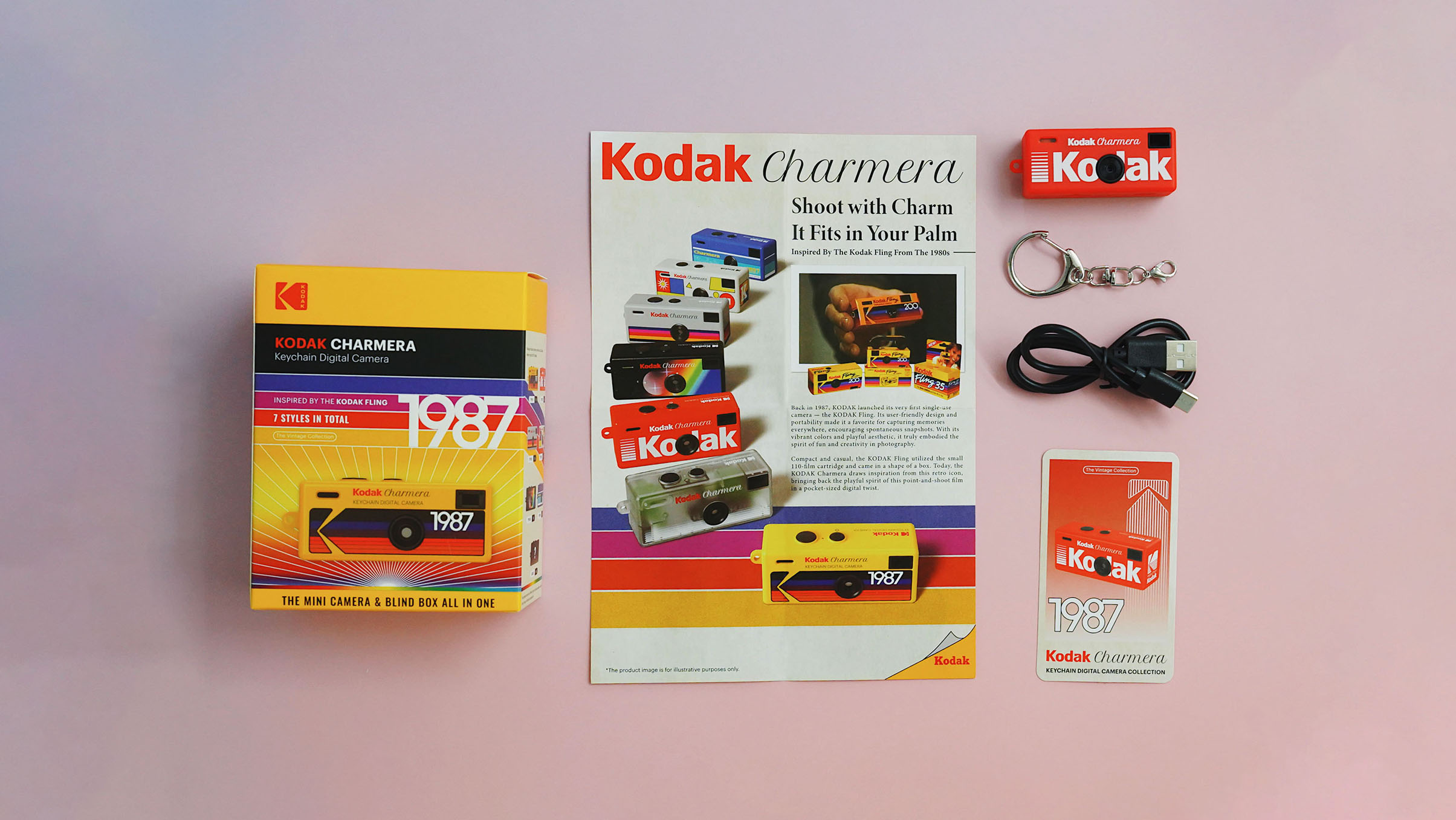It's hip to be square with a Diana F+ camera, now back in Black Jack & CMYK editions
These proudly plastic film cameras have got to be one of the cheapest ways into 120 format film photography

These retro Diana F+ cameras come from the hipsters at Lomography, and bring back a celebrated medium format camera from the 1960s. But you can forget your Hasselblads, your Rolleiflexes and your Mamiyas. These are ultra basic, ultra-simple plastic snapshot cameras. Kitsch is king, and the more unpredictable the images, the better.
These cameras are not about image quality on a budget. They are about as far from the best medium format cameras as you can get. They are anti-tech, anti-culture, anti-quality – unless you consider creative quality as important as technical quality, which isn't a bad point.
And they are cheap. No, really cheap. They cost $89/£79 (around AU$150), and that includes a matching Diana+ Flash. This is the only bit of the kit that requires battery power, incidentally, and only a single AA cell at that.
The Lomography Diana F+ now comes with two more color options - as Lomography has brought back two special edition variants from a decade ago. The gaudy CMYK version is presumably a nod to creatives in the print industry, while the Black Jack edition hints at the gamble everyone takes when they pick up these cameras. (Black Jack or Blackjack? Hmm.)
They are basic in the extreme, with a single 1/60sec shutter speed plus B, and a fixed 75mm lens with apertures of f/8, f/11, f/16 or a pinhole option. You can also pop on an optional glass optic, sold separately, which leaves us in little doubt what the regular lens is made of.
Lomography isn't playing down this primitive technology, it's bigging it up, celebrating the lens vignetting and the camera's unpredictability. You can make multiple exposures to add to the randomness and attach the included Diana F+ Flash for conditions too dim for available light exposures, which is likely to be anything taken indoors.
The Diana F+ takes medium format 120 roll film and shoots 12 full frame square shots on a roll, or 16 narrower ones. The negative size is a whopping 60 x 60mm, and around four times the size of a 35mm film negative, and Lomography does also sell 120 films for this camera, though you may have to hunt around for local labs that can develop them.
There have been dozens of colorful Diana F+ variants over the years – but the standard, and most widely sold version, comes in turquoise and black.
Lomography champions a kind of low-fi counter-culture that's an antidote to the sterile precision of modern digital cameras, and aims to restore the excitement, unpredictability and discovery of an earlier photographic age – so these new Diana F+ cameras should fit right in.
We do have a guide, by the way, to the best Lomography cameras, but we might just have to add these in too. Whether or not they qualify among the best film cameras will depend on how you feel about their unique rendering of the world!
The best camera deals, reviews, product advice, and unmissable photography news, direct to your inbox!

Rod is an independent photography journalist and editor, and a long-standing Digital Camera World contributor, having previously worked as DCW's Group Reviews editor. Before that he has been technique editor on N-Photo, Head of Testing for the photography division and Camera Channel editor on TechRadar, as well as contributing to many other publications. He has been writing about photography technique, photo editing and digital cameras since they first appeared, and before that began his career writing about film photography. He has used and reviewed practically every interchangeable lens camera launched in the past 20 years, from entry-level DSLRs to medium format cameras, together with lenses, tripods, gimbals, light meters, camera bags and more. Rod has his own camera gear blog at fotovolo.com but also writes about photo-editing applications and techniques at lifeafterphotoshop.com


